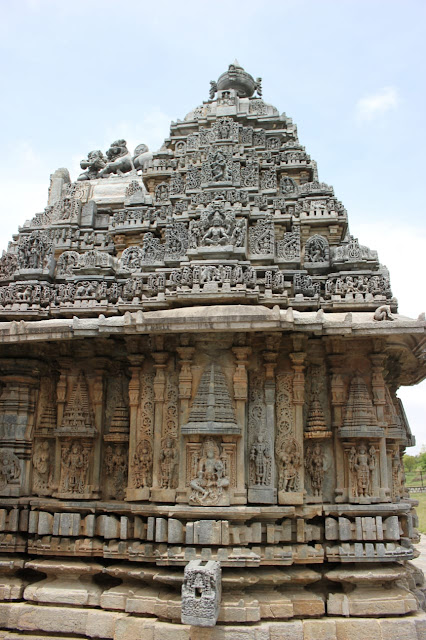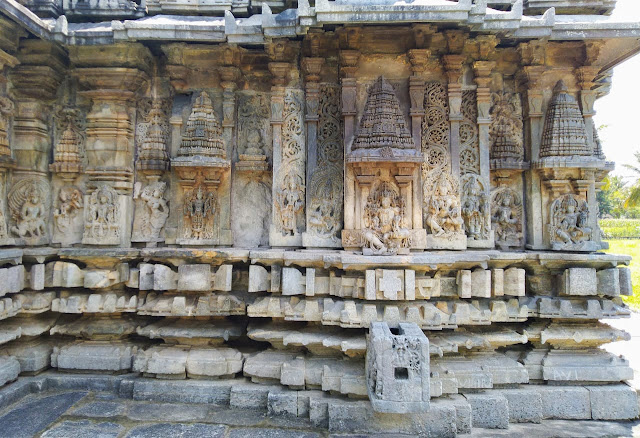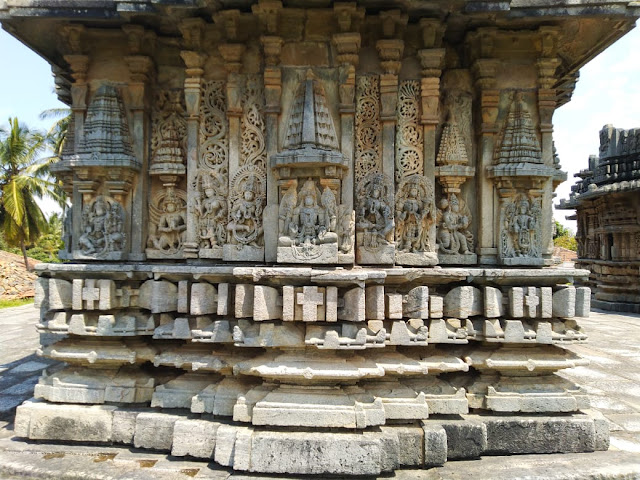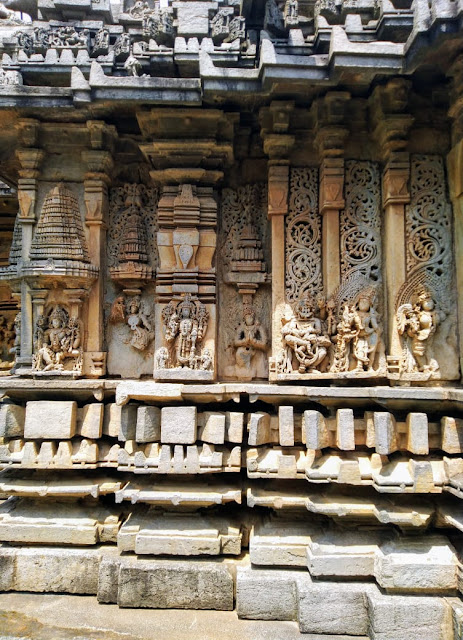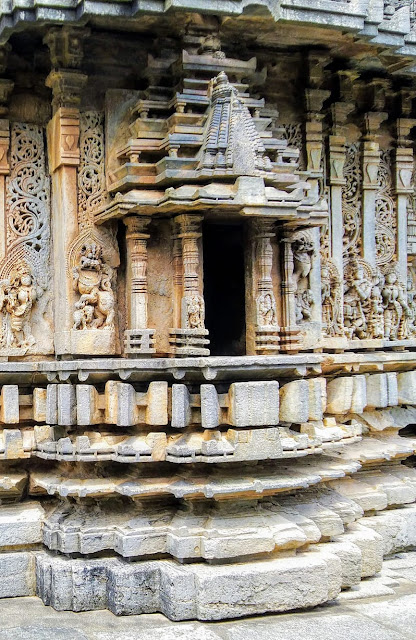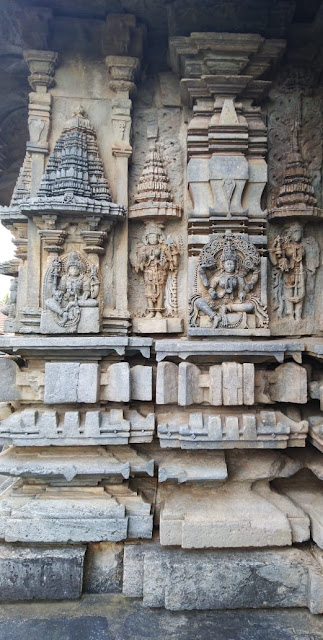SUKANAASI AND GARBHAGRIHA
The SUKANAASI has JAALANDRAS (ಜಾಲಂದ್ರ) i.e., perforated screens. The jambs of the SUKANAASI have boys blowing SHANKHA (ಶಂಖ) and behind them can be seen women CHAAMARADHAARIS (ಚಾಮರಧಾರಿ). Above the lintel is an aaseena TRIVIKRAMA. In the GARBHAGRIHA, on a GARUDA PEETHA (ಗರುಡ ಪೀಠ) is found a beautiful image of KESHAVA (ಕೇಶವ) ( S-C-G-P ) which is about 6' high with a consort on either side. The image of KESHAVA is under a TORANA (ತೋರಣ). The TORANA has DASHAAVATARAS (ದಶಾವತಾರ) in which may be seen BUDDHA in YOGAASANA and KALKI riding a horse.
